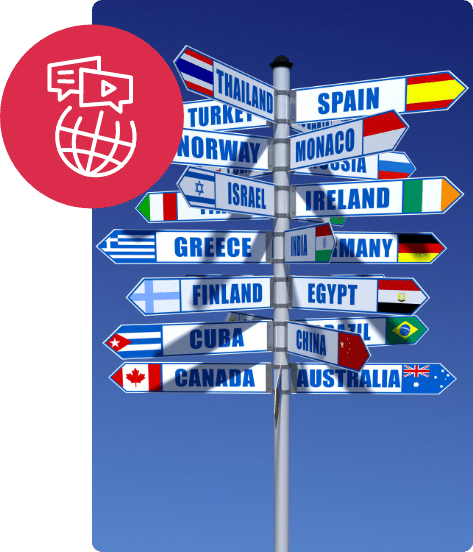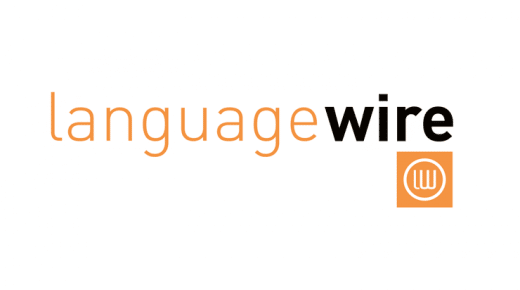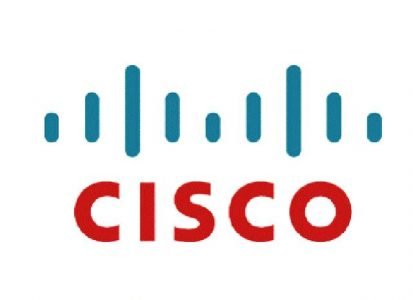Farsi Persian Transcription Services
GoLocalise offers transcription services for audio and video files
in over 100 languages as well as English.
100% Precise and Human Generated Farsi Persian Transcription Services!
GoLocalise offers Farsi Persian transcription services for audio and video files for business and individual purposes. Our expert team of transcribers will create a text version of your video or audio file, and we can also translate and/or voice over your transcript.
We are your reliable Farsi Persian transcription company!
What Is Transcription?
No, this isn’t a trick question and you might be surprised how many people get this wrong. In simple terms, transcription is the process of listening to audiovisual content and writing down what is heard.
Seems simple enough, so what exactly is the part that confuses people?
We used GoLocalise to voice several of our films in Vietnamese. The service was friendly and professional. Being able to attend the recording sessions gave me confidence; the sound engineer had taken a lot of time to familiarise himself with our films and scripts, and the voice talents were incredibly competent and good at adapting to any changes in the scripts as we recorded. The whole process was incredibly smooth and I felt in safe hands.
Josie Gallo
Content Co-ordinator at Medical Aid Films
Let's get started!
Understanding The Difference Between Transcription and Translation
Many people confuse transcription with translation.
If you need a text version of your audiovisual content in a language which is different to the original language of your source material then you need translation (which, by the way, we can also help you with).
If you’re simply in need of a written transcript in the same language as your original audiovisual materials, that is transcription and you’re in the right place.
Sound Good? Let's Get Started
What Do Our Farsi Persian Audio and Video Transcription Services Include?
Verbatim Transcriptions
A voice to text transcription method, this records all interjections, signs of emotions (coughs, sighs, chuckles, etc.), false starts and shifts in thought processes. This type of transcription is often useful if you're going to use your transcript as an aid to help during a subsequent editing process, but if you want something more like a finished product you might benefit more from a different type of transcription.
Word-for-word transcription
As with verbatim transcriptions, this style will capture the text as it is spoken without making any attempts to correct grammar or restructure sentences for better clarity. However, all filler words will be removed.
Grammatically correct transcriptions
In this type of transcription, filler words are eliminated, false starts and self-corrected words aren't included, and grammar and mispronounced words are corrected. The resultant document will read less like conversational speech and more like a properly structured text. This style is great for publishing as an article or for any other purpose that's designed to be public-facing.
Learn more about Transcription Services
Let's get started!
What Are the Benefits of Transcribing Your Farsi Persian Audio or Video Content with GoLocalise?
The answer to that is that many people confuse transcription with translation. If you need a text version of your audiovisual content in a language which is different to the original language of your source material then you need translation (which, by the way, we can also help you with).
If you’re simply in need of a written transcript in the same language as your original audiovisual materials, that is a transcription service and you’re in the right place.
It makes your audiovisual content more easily discoverable
Let's take a podcast, for example. If you're able to make a text version of your audio content available, this enables search engines such as Google to include your content in search results much more easily. People searching online for phrases related to your subject matter will therefore be much more likely to encounter your materials during their search, thus increasing traffic to your site and increasing your potential reach overall.
The likelihood of your content being quoted in other publications will increase
Any journalist, blogger or anybody else who regularly writes articles will require some form of written quote or citation in order to support the argument or point of view that they're trying to convey with their article. When deciding what supporting arguments to use for their piece and choosing between two equally credible sources of audiovisual information – one already transcribed and ready to quote - that writer is naturally going to choose the pre-transcribed version.
And There are Many More Reasons
Creating your audiovisual content, whether that's a podcast or a video of some kind, is often an incredibly time-consuming and expensive process. So why use it for only one purpose? You can use a transcription to repurpose your materials into a blog or social media post, to drive traffic to your website, to use as a teaser to bring people to a full-length podcast, and many more uses too.
Making Your Content accessible to a Wider Range of People
Of course, the very best example of this would be people who are deaf or have other hearing impairments. Without a written transcript of your audio your content will simply not be accessible to this group of individuals.
Connecting With You People Who Speak Other Languages
Did you know that in the United Kingdom there are almost 550,000 speakers of Polish as their first language, plus approximately an additional one million speakers of various languages from India, such as Punjabi, Gujarati, Bengali and Urdu? For many people, one of the toughest things as a speaker of a second language is following along with audio in that second language - especially if the content is particularly complex or colloquial in nature. For these people it's often an invaluable resource to be able to follow along with a written version of audiovisual content.
Can I Use a Transcription As Subtitles?
Yes, and no. GoLocalise specialises in anything audiovisual so of course if you’re in need of a full subtitling service we can absolutely help with that too, and in fact transcription is an integral part of the process when creating a same-language subtitle file.
The main difference here would be that subtitling also requires very precise technological know-how so that the resultant subtitles follow subtitling conventions and don’t prove to be distracting to the viewer.
A transcription by default won’t necessarily follow these guidelines and is better suited for other purposes, such as the ones listed above.
Tap Into Our High Quality Farsi Persian Transcription Services Now!
So, whatever your reason for transcribing your audio or video content in Farsi Persian, we’re happy to help.
Whether it’s to make your Farsi Persian podcast more accessible to people with hearing impairments, for use as a starting point for a video localisation project, or for any other reason, our experience in these fields has made us the top choice for clients all over the world who want to get more out of their audiovisual content.
Our transcriptionists specialise transcribing Farsi Persian content, but also other audiovisual content from many other languages, consistently ensuring high-quality results.

You deserve the best!
Leave your project to the experts at GoLocalise so that you can relax and be assured of getting top-notch results
Every single detail will be analysed, studied and looked after so that you do not need to worry.
Some would say it’s not too classy to blow our own trumpet… but we just like to point out two very important details.
We have achieved ISO 9001 Quality Management certification in recognition of our consistent performance and high standards, and ISO 14001 Environmental Management because we care about our planet!
And if you are still curious and want to know more about us, why not have a look at our studio page.
Why Choose Us?
Learn more about Transcription Services
Let's get started!

Price Match Promise
Challenge Our Prices, Enjoy Our Quality
Reach your target market
Don’t leave your important communication to chance. Make sure your message is clearly understood by your audience and choose GoLocalise for your next voice over project. Check out our latest case studies.
We have thousands of passionate and professional voice over artists ready to work with you. Meet some of them in our blog stories.
No matter the type of voice you are looking for, we’ll either have it in our books or find it and source it for you. We’ll organise a casting and ensure you get the perfect voice to suit your needs.
You will also benefit from having your own dedicated project manager – a single point of contact – to guide you through your project, answer any questions you may have and make things a whole lot easier.


Meet your dedicated project manager
Your project will be in the safe hands of one of our multilingual project managers. They will guide you through every step and ensure you understand the process.
Our industry has a tendency to use lots of technical jargon but your dedicated project manager will be on-hand to untangle the mess and explain all you need to know to ensure you only pay for what you need.
If you need help in choosing the right voice over talent to deliver your message then just ask your project manager.
From booking our voice over recording studios to ensuring you project is delivered on time in your chosen media, relax and let your experienced project manager take care of everything.
You will receive unparalleled attention to detail and customer focus at competitive prices. You’ll wish everything was as easy as a GoLocalise voice over agency!
Perfect voice over recording studios
Your most discerning customers will thank you for choosing our modern state-of-the-art recording studios. Every detail has been carefully thought through for your comfort, leaving you to simply focus on what matters most – the voice over session.
Your recordings will sound beautiful and crystal clear thanks to our high-end studio sound-proofing and audio equipment, i.e. ProTools HD and Neumann microphones.
Maximise your budget by reducing the need for retakes with the help of our experienced in-house sound engineers who will professionally capture and edit your audio.
And for those recordings in languages which neither you nor your client speak, we’ll bring a qualified pro to your session to add that essential ingredient.
To make you feel right at home, we provide high-speed Wi-Fi Internet and air-con is available. And last but not least, we have the biggest cookie jar you’ve ever seen, that’ll make your custom brew taste even sweeter!

What our happy customers say
Friendly and professional – made everything easy for our whole co-hort of third year acting students to record their voice demos. Thank you for great service!
Philippa Strandberg-Long
Deputy Course Leader - Acting, Italia Conti
We’ve worked with the GoLocalise team on countless video projects and have always had the same consistent, great experience. Not only are they responsive and quick on turnaround, I can always trust the VO will be done right – they are always 100% clear with communication and ensure their talent is prepared to record by asking necessary questions upfront before recording. Highly recommended and will definitely work with them on future projects.
Jonathan Lapps
Account Manager at Epipheo
They’re reliable, adaptive and obsessed with quality. And while you can never be 100% guaranteed of perfection, you can be sure GoLocalise will go the extra mile to get it right every time. Whether that’s hiring extra resources, hopping on multiple calls or even changing their internal processes, they’ll do what it takes. We’ve worked with them now for over to 5 years and we are truly thankful to have such a strong localisation partner for our business.
Lucas Cole
Sales and Marketing Director at Epipheo
I really love working with GoLocalise. Their subtitling department takes care of everything and they always deliver the best quality files. I’m also very happy that they’re willing, and capable, to work with all kinds of requests, and are always happy to help me and make the process better. The team is also so very helpful, and very nice to work with. I always recommend their services to everybody.
Patricia Leon-Fedorko
Account Specialist at Advanced Language

We used GoLocalise to voice several of our films in Vietnamese. The service was friendly and professional. Being able to attend the recording sessions gave me confidence; the sound engineer had taken a lot of time to familiarise himself with our films and scripts, and the voice talents were incredibly competent and good at adapting to any changes in the scripts as we recorded. The whole process was incredibly smooth and I felt in safe hands.
Josie Gallo
Content Co-ordinator at Medical Aid Films
I really enjoy working with GoLocalise. The team is very nice and flexible, and they deliver subtitles of high quality, both from a technical and linguistic point of view. Subtitling is a stress-free matter when it is in their hands, I would definitely recommend their services.
Marion Hirst
Translation Project Manager at Language Wire

A Brief History Of Farsi Persian
Persian, also known as Farsi is the predominant modern descendant of Old Persian, a south-western Iranian language within the Indo-Iranian branch of the Indo-European languages. It is primarily spoken in Iran, Afghanistan (officially known as Dari since 1958 for political reasons), and Tajikistan (officially known as Tajiki since the Soviet era for political reasons), and some other regions, which historically came under Persian influence. The Persian language is classified as a continuation of Middle Persian, the official religious and literary language of Sassanid Persia, itself a continuation of Old Persian, the language of the Achaemenid Persian Empire. Persian is a pluricentric language and its grammar is similar to that of many contemporary European languages. Persian is so-called due to its origin from the capital of the Achaemenid empire, Persis (Fars or Pars) hence the name Persian (Farsi or Parsi). A Persian-speaking person may be referred to as Persophone.
There are approximately 110 million Persian speakers worldwide, with the language holding official status in Iran, Afghanistan, and Tajikistan. For centuries, Persian has also been a prestigious cultural language in other regions of Western Asia, Central Asia, and South Asia by the various empires based in the regions.
Persian has had a considerable (mainly lexical) influence on neighbouring languages, particularly the Turkic languages in Central Asia, Caucasus, and Anatolia, neighbouring Iranian languages, as well as Armenian, Georgian, and Indo-Aryan languages, especially Urdu. It also exerted some influence on Arabic, particularly Bahrani Arabic, while borrowing much vocabulary from it after the Muslim conquest of Persia.
With a long history of literature in the form of Middle Persian before Islam, Persian was the first language in Muslim civilization to break through Arabic’s monopoly on writing, and the writing of poetry in Persian was established as a court tradition in many eastern courts. Some of the famous works of Persian literature are the Shahnameh (‘Book of Kings’) of Ferdowsi, works of Rumi, Rubaiyat of Omar Khayyam, Divan (‘miscellany’) of Hafiz and the two miscellanea of prose and verse by Sa’di of Shiraz, the Golestān (lit., ‘flower garden’) and the Būstān (also meaning “garden;” lit., ‘a place of fragrance’).
Persian, the historically more widely used name of the language in English, is an anglicised form derived from Latin *Persianus < Latin Persia < Greek Περσίς Persís “Persia”, a Hellenized form of Old Persian Parsa.[26] According to the Oxford English Dictionary, the term Persian as a language name is first attested in English in the mid-16th century. Native Iranian Persian speakers call it Fārsi.[28] Farsi is the Arabicized form of Pārsi, due to a lack of the ‘p’ phoneme in Standard Arabic (i.e., the ‘p’ was replaced with an ‘f’). The origin of the name Farsi and the place of origin of the language which is Fars Province is the Arabicized form of Pârs. In English, this language has historically been known as “Persian”, though “Farsi” has also gained some currency. According to the Oxford English Dictionary, the term Farsi was first used in English in 1926, while Parsi dates to 1790. “Farsi” is encountered in some linguistic literature as a name for the language, used both by Iranian and by foreign authors.
In South Asia the word “Farsi” refers to the language while “Parsi” describes the people of Persian origin, particularly Zoroastrians. The Academy of Persian Language and Literature has declared that the name “Persian” is more appropriate, as it has the longer tradition in western languages and better expresses the role of the language as a mark of cultural and national continuity. Some Persian language scholars such as Ehsan Yarshater, editor of Encyclopædia Iranica, and University of Arizona professor Kamran Talattof, have also rejected the usage of “Farsi” in their articles.
The international language-encoding standard ISO 639-1 uses the code “fa”, as its coding system is mostly based on the local names. The more detailed standard ISO 639-3 uses the name “Persian” (code “fas”) for the dialect continuum spoken across Iran and Afghanistan. This consists of the individual languages Dari (Afghan Persian) and Iranian Persian.
Currently, VOA, BBC, DW, and RFE/RL use “Persian Service” for their broadcasts in the language. RFE/RL also includes a Tajik service, and an Afghan (Dari) service. This is also the case for the American Association of Teachers of Persian, The Centre for Promotion of Persian Language and Literature, and many of the leading scholars of Persian language.
The Complete Solution To Adapt Your Content
Looking to get your entire project under one roof? Look no further, we can help you make life easier for you!

- Neumann Microphones
- On-hand Sound Engineers
- Talented Voice Over Actors
- State-of-the-art Recording Studios

- Tailored to Your Business
- Laser-Focused Project Managers
- Global Network of 600+ Languages
- Stringent Quality Control Processes

- Professional Subtitlers
- Open/Closed Captions & Web
- Industry-Standard Software
- Subtitle Burn-in & Graphic Editing

- Improve accessibility
- Reach a wider audience
- Increased SEO and video views
- Maximise your video's engagement











